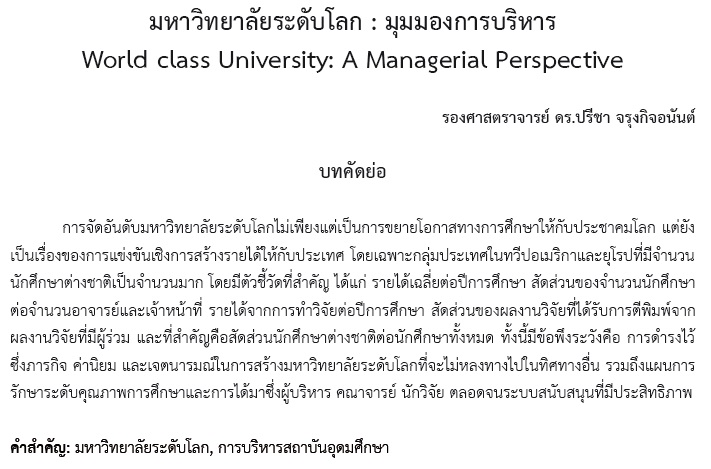World class University: A Managerial Perspective
Keywords:
World Class Universities, Higher Education ManagementAbstract
World-class university has grown rapidly in the past decades. Its mission has not only focused on the enhancement of educational opportunities for all, but in practice, being a world class university has become a significant source of revenues pouring in from various countries as evidenced in the American and European continents. Key indicators of success include average revenue per year, faculty-student ration, research-based income, publications in distinguished journals, and more importantly, the foreign student ratios. However, to maintain the world-class status, higher education institutions are facing challenges of adherence to their core purpose and values as well as the strategic plan of quality assurance ranging from the administration, faculty, researchers, and supporting environment.
References
Altbach (2003). “The Costs and Benefits of The World-Class University,” International Higher Education, 33, PP.5-8
Levin, H, M., Teong D.W. and Ou D. (2006) “What is the World Class University, Paper Prepared for the Presentation at the 2006 Conference on the Comparative and International Education Society”, Honolulu, Hawaii, 16 March 2006.
Salmi, J. (2009). “The Establishing of The World-Class Universities,” Washington, D.C. The World Bank.
Times Higher Education World University Rankings 11th Annual Edition (2014-2015)

Downloads
Published
How to Cite
Issue
Section
License
Copyright (c) 2023 NIDA Business School, National Institute of Development Administration

This work is licensed under a Creative Commons Attribution-NonCommercial-NoDerivatives 4.0 International License.


